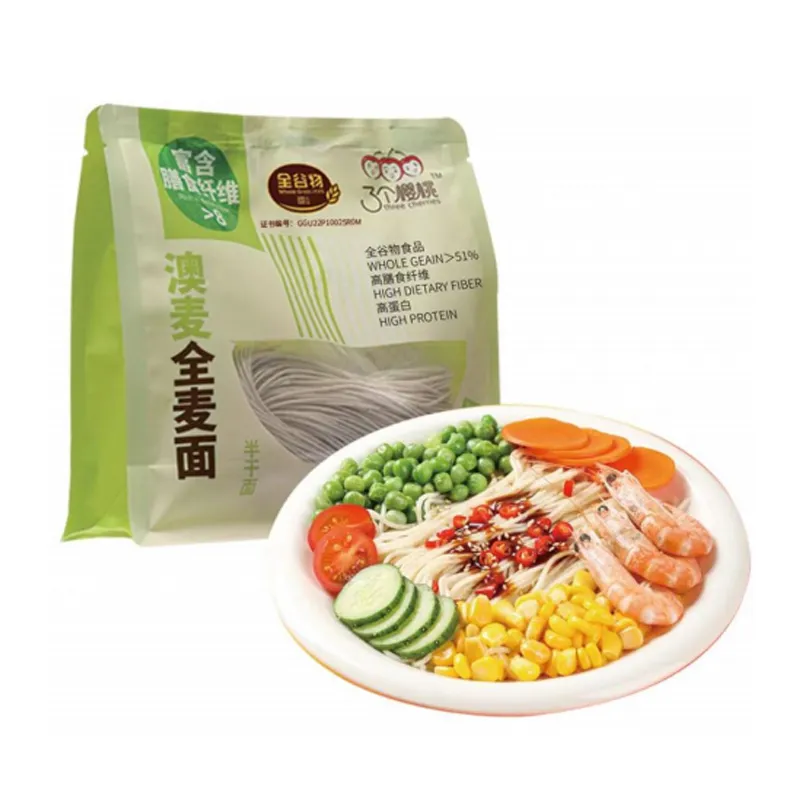Gluten-Free Soba Noodles for Healthy and Delicious Meals
Soba The Gluten-Free Alternative for Health Enthusiasts
In the quest for healthier eating options, many individuals are turning their attention to gluten-free alternatives. One such option that has gained significant popularity in recent years is soba noodles, traditionally made from buckwheat. In this article, we will explore the nutritional benefits, culinary versatility, and growing popularity of soba noodles in gluten-free diets.
What is Soba?
Soba is a Japanese noodle made primarily from buckwheat flour, which is naturally gluten-free. While some brands may blend buckwheat with wheat flour, true soba should consist of at least 70% buckwheat to be considered authentic. Buckwheat, despite its name, is not related to wheat and is actually a seed from a plant closely related to rhubarb. This unique composition makes soba a cherished staple in many Asian cuisines, especially in Japan.
Nutritional Benefits of Soba Noodles
Soba noodles offer a myriad of health benefits, making them an attractive choice for both gluten-free dieters and health-conscious individuals. First and foremost, buckwheat is rich in nutrients. It contains high-quality protein, essential amino acids, dietary fiber, and a variety of vitamins and minerals, including B vitamins, manganese, and magnesium.
Moreover, soba is known for its low glycemic index (GI), making it a fantastic option for individuals looking to manage their blood sugar levels. Foods with a low GI are digested and absorbed more slowly, leading to a gradual increase in blood sugar levels. This can be particularly beneficial for those with diabetes or those aiming to maintain steady energy levels throughout the day.
The presence of antioxidants, particularly rutin, has also been highlighted in studies examining buckwheat. Rutin is a flavonoid that plays a crucial role in reducing inflammation and promoting cardiovascular health. With these properties, soba not only nourishes the body but also helps protect it from chronic diseases.
Culinary Versatility
soba gluten free

One of the remarkable features of soba noodles is their versatility in the kitchen. Chefs and home cooks alike appreciate soba for its ability to absorb various flavors while maintaining a unique, nutty taste. Soba can be enjoyed hot or cold, making it suitable for a variety of dishes throughout the year.
In Japan, soba is commonly served in a hot broth as a comforting noodle soup. On hot summer days, chilled soba, known as “zaru soba,” is enjoyed with a dipping sauce made from soy sauce, mirin, and dashi. This light yet flavorful dish is not only refreshing but also quick and easy to prepare.
Soba noodles lend themselves well to a variety of recipes, from stir-fries to salads. Adding fresh vegetables, proteins such as tofu or shrimp, and a zesty dressing can create a balanced meal that satisfies both taste buds and nutritional needs. The incorporation of soba in various cuisines—be it in a robust Italian-style pasta or Asian-inspired stir-fry—showcases its adaptability and appeal.
The Growing Popularity of Soba in the Gluten-Free Community
As the demand for gluten-free options continues to rise, so too does the interest in soba noodles. Consumers are increasingly aware of the health implications associated with gluten and are seeking alternatives that do not compromise on taste or texture. The rise of plant-based diets also plays a significant role in the popularity of buckwheat-focused recipes, as more individuals look for nutritious, whole-food sources that fit their dietary preferences.
Additionally, the availability of soba noodles in grocery stores and specialty markets has expanded. More brands are offering 100% buckwheat soba, ensuring that those who are diagnosed with celiac disease or gluten intolerance can safely enjoy this delicious noodle without worry. With online cooking videos, food blogs, and social media platforms dedicating entire sections to gluten-free recipes featuring soba, it is clear that this humble noodle has captured the hearts and palates of many.
Conclusion
Soba noodles are more than just a gluten-free alternative; they are a nutritious, versatile, and flavorful addition to any meal. With their low glycemic index, high protein content, and myriad health benefits, soba offers an excellent choice for anyone looking to enhance their diet. Whether enjoyed in traditional Japanese dishes or as part of modern culinary experiments, soba noodles are here to stay, making them a must-try for everyone, especially those navigating gluten-free lifestyles. So, the next time you're in the kitchen, consider reaching for soba noodles and delight in the delicious possibilities they bring.
-
Unleash Your Inner Chef with Delectable Italian Pasta CreationsNewsAug.01,2025
-
Savor Health and Flavor: Irresistible Soba Noodles for Sale Await!NewsAug.01,2025
-
Nourish Your Body with Premium Organic Ramen - A Culinary Delight AwaitsNewsAug.01,2025
-
Elevate Your Dishes with Our Exquisite Kinds of Egg NoodlesNewsAug.01,2025
-
Dive into Flavorful Convenience with Our Ramen OfferingsNewsAug.01,2025
-
Discover Exquisite Types of Naengmyeon and Chilled Soba NoodlesNewsAug.01,2025
-
Is Whole Wheat Pasta Healthy?NewsMay.30,2025
Browse qua the following product new the we

















































































































